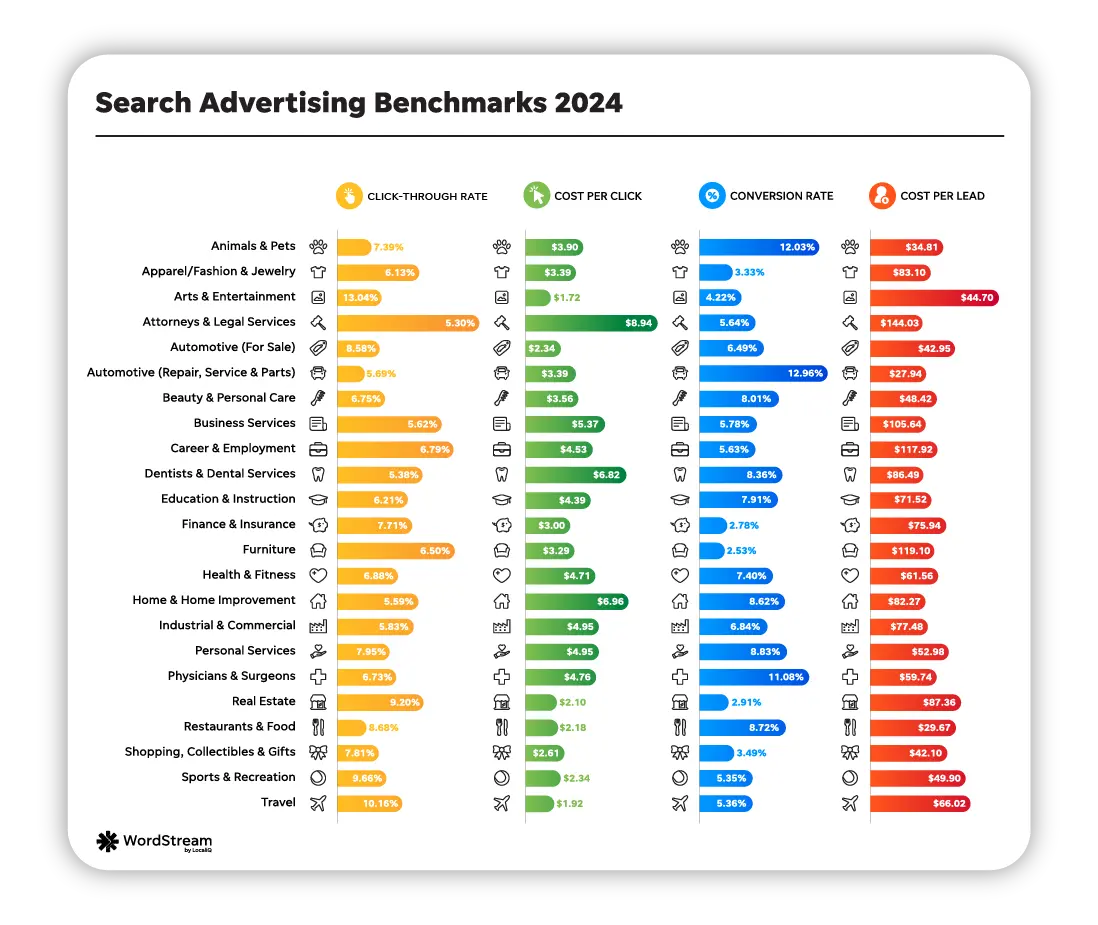Home » Google Ads Campaign Budget Calculator
Estimated Clicks Needed:
Estimated Total Budget: $
Estimated Budget for Minimum Conversions (Approx. 50): $
This is an estimate to potentially exit the learning period. Actual requirements may vary.
We’ve designed a simple yet effective Google Ads budget calculator that needs only your projected conversion rate and average cost-per-click (CPC) to provide you with a clear picture of your required spend. This allows you to set realistic lead generation targets, manage your campaigns, and even grasp the scale required for automated bidding methods to effectively exit their learning phase.
The best part is that you can start planning your success right away using our prebuilt calculator, which you can find on the left. Identifying your desired lead volume might assist you approach budgeting. Simply select the number of leads you want to generate, and our calculator will aid you in projecting the potential money required to achieve that target.
Before you can utilize the Google Ads budget calculator, you must first determine your average conversion rate—the percentage of ad clicks that result in leads. A popular beginning point for investigating sector-specific benchmarks is to look up Google Ads conversion rates for your industry. Remember, these are averages; thus, check for criteria relevant to your field of employment. If you already have a website, you may review its analytics and look at the conversion rate for lead generation goals produced from organic search traffic. However, sponsored traffic may convert differently.
If you lack relevant sector data and are new to online advertising, a simple industry-agnostic lead generation benchmark of 2% to 5% can serve as a preliminary estimate. This is the most imprecise technique, thus your real conversion rate may vary greatly. If no more information is available, utilize it only as a starting point.
The other missing component for our budget calculator is knowing your prospective Cost-Per- Click (CPC). Using the Google Keyword Research Tool within your Google Ads account will provide the most consistent means of obtaining these figures straight from Google. You can learn more about keyword research here.
While these averages lack the region and currency specificity of the Google Keyword Research Tool, making the tool the more accurate choice, industry benchmarks provide another approach to gain a broad notion of possible CPCs if you prefer not to immediately do keyword research. Wordstream’s PPC benchmark is a great resource.

If you already have past sales conversion data, you can find the required lead count by working backwards from your revenue targets. This entails knowing the average worth of your usually closed sales from a certain amount of leads.
Here’s how to work it out:
Number of Leads = (Revenue Goal / Average Deal Value) / Lead-to-Customer Conversion Rate
For example, if your revenue goal is $100,000, your average deal value is $5,000, and your lead-to-customer conversion rate is 10% (or 0.10), the calculation would be:
Required Number of Customers = $100,000 / $5,000 = 20 customers Required Number of Leads = 20 customers / 0.10 = 200 leads
This calculation indicates that you would need to generate approximately 200 leads to achieve your $100,000 revenue goal, based on your historical sales performance. Remember that the accuracy of this calculation heavily relies on the accuracy of your historical data.
For Google Ads automated bidding strategies like as Target CPA or Maximize Conversions, there is an initial “learning phase” during which the algorithm analyzes your campaign data to optimize bids for your objectives. To effectively exit this learning phase and achieve more stable and reliable performance, it is generally recommended to accumulate a minimum number of conversion events – typically around 30-50 conversions – within a reasonable timeframe (such as a week), and we’ve even included a handy checkbox in our calculator if you want to aim for these minimum thresholds.
Finally, keep in mind that your first Google Ads budget for lead generation is merely a starting point for directing your efforts. The most effective campaigns view their budget as a variable that is constantly adjusted based on actual performance. Monitor your general income patterns and your sales team’s ability to convert generated leads. Maintaining agility and sensitivity to these critical variables will help you ensure that your Google Ads budget remains aligned with your company’s goals and promotes consistent growth.